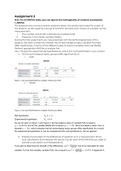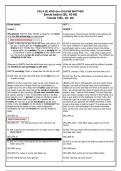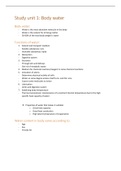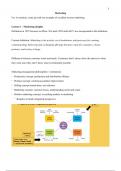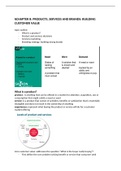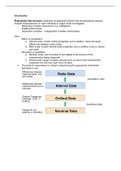24/3/2022: Evolutionary and development: Insect color patterns + Heterochrony
The beginning of wing development
Wings have an anterior-posterior (AP) axis → are specified by expression of the hox gene in the
posterior part → hedgehog (hh) is a signaling molecule that is produced by engrailed to diffuse
over a short distance across the AP axis → hedgehog specifies a dividing line between anterior
and posterior with different patterns of development on each side.
Wings also have a dorsal-ventral axis → hox gene apterous is required for the development of
dorsal cells.
So the default cell fate is ventral and anterior.
- Apterous switches on the dorsal developmental process
- Engrailed switches on the posterior developmental process
Different parts of the wings colorized for which hox gene is active:
- Yellow = apterous only (dorsal, anterior)
- Blue = engrailed only (ventral, posterior)
- Green = apterous + engrailed (dorsal, posterior)
- White = neither (ventral, anterior)
The wings of Drosophila are a simplified version of typical insect wings. The veins of the
butterfly and Drosophila wing are classified into groups by color. Ancestral insects had four
complex wings → However, in drosophila, the wings are reduced to a single pair with smaller
size and complexity.
The same genes (apterous, engrailed, hedgehog) specify the axes in both groups, so the
system is conserved during evolution (even after simplification in drosophila)
At the end of wing development → fine-scale control of tiny “scales” of color. In the Heliconius
genus, black, orange, brown, and yellow colors are created by pigments. A specific combination
of transcription factors is associated with each specific color. Different rates of development are
associated with different colors (black scales mature first).
Regulation of wing color during development
Most of the phenotypic variation is associated with just four major loci.
- Red patterns: Optix transcription factor
- yellow/white patterns: Cortex transcription factor
- Forewing band shape: WntA protein
- Yellow/white color: Unknown locus chromosome 1
, In the larval stages, the protein WntA is expressed in larval wing discs in most cells destined to
become black. It most likely acts as a morphogen. So, wherever WntA is present, the wing
tends to become black.
There are not many examples of cis-regulatory mutations changing the behavior of a
morphogen → WntA in the Heliconius genus seems to be an example:
- The WntA protein is an ancient conserved morphogen. The expression patterns of
wingless in the pupal wing (above) correspond to dark spots in the adult wing, just as in
the butterfly, modified by cis-regulatory mutations. Note that WntA is a protein involved in
the wingless signaling pathway (=pathway that signals the shape and color of wings).
Changes in color resulting from the evolution of transcription factors
appear to be much more common than that of proteins.
On the image, the gene expression of Optix transcription factor (red) in
pupal wings precisely maps onto areas of the wing that are red in adults.
Cis-regulatory evolution of Optix, which means changes in transcription
factor binding sites close to the Optix gene, is responsible for this.
So, Optix results in red color. Where Optix is expressed in the wing
depends on the cis-regulatory evolution of the Optix promoter region. Optix
is expressed later during development than WntA, so WntA first specifies
which areas are black, and then afterward Optix specifies which scales are painted red. This
explains why not every part with Optix is red.
Evolutionary scenario: Co-option of a gene
1. The evolution of the regulatory region of Optix in butterflies makes it become expressed
in the developing wing as well as the developing eye
2. Evolution in the regulatory region of pigment synthesis enzymes makes them become
responsive to Optix's presence or absence during pupation
The beginning of wing development
Wings have an anterior-posterior (AP) axis → are specified by expression of the hox gene in the
posterior part → hedgehog (hh) is a signaling molecule that is produced by engrailed to diffuse
over a short distance across the AP axis → hedgehog specifies a dividing line between anterior
and posterior with different patterns of development on each side.
Wings also have a dorsal-ventral axis → hox gene apterous is required for the development of
dorsal cells.
So the default cell fate is ventral and anterior.
- Apterous switches on the dorsal developmental process
- Engrailed switches on the posterior developmental process
Different parts of the wings colorized for which hox gene is active:
- Yellow = apterous only (dorsal, anterior)
- Blue = engrailed only (ventral, posterior)
- Green = apterous + engrailed (dorsal, posterior)
- White = neither (ventral, anterior)
The wings of Drosophila are a simplified version of typical insect wings. The veins of the
butterfly and Drosophila wing are classified into groups by color. Ancestral insects had four
complex wings → However, in drosophila, the wings are reduced to a single pair with smaller
size and complexity.
The same genes (apterous, engrailed, hedgehog) specify the axes in both groups, so the
system is conserved during evolution (even after simplification in drosophila)
At the end of wing development → fine-scale control of tiny “scales” of color. In the Heliconius
genus, black, orange, brown, and yellow colors are created by pigments. A specific combination
of transcription factors is associated with each specific color. Different rates of development are
associated with different colors (black scales mature first).
Regulation of wing color during development
Most of the phenotypic variation is associated with just four major loci.
- Red patterns: Optix transcription factor
- yellow/white patterns: Cortex transcription factor
- Forewing band shape: WntA protein
- Yellow/white color: Unknown locus chromosome 1
, In the larval stages, the protein WntA is expressed in larval wing discs in most cells destined to
become black. It most likely acts as a morphogen. So, wherever WntA is present, the wing
tends to become black.
There are not many examples of cis-regulatory mutations changing the behavior of a
morphogen → WntA in the Heliconius genus seems to be an example:
- The WntA protein is an ancient conserved morphogen. The expression patterns of
wingless in the pupal wing (above) correspond to dark spots in the adult wing, just as in
the butterfly, modified by cis-regulatory mutations. Note that WntA is a protein involved in
the wingless signaling pathway (=pathway that signals the shape and color of wings).
Changes in color resulting from the evolution of transcription factors
appear to be much more common than that of proteins.
On the image, the gene expression of Optix transcription factor (red) in
pupal wings precisely maps onto areas of the wing that are red in adults.
Cis-regulatory evolution of Optix, which means changes in transcription
factor binding sites close to the Optix gene, is responsible for this.
So, Optix results in red color. Where Optix is expressed in the wing
depends on the cis-regulatory evolution of the Optix promoter region. Optix
is expressed later during development than WntA, so WntA first specifies
which areas are black, and then afterward Optix specifies which scales are painted red. This
explains why not every part with Optix is red.
Evolutionary scenario: Co-option of a gene
1. The evolution of the regulatory region of Optix in butterflies makes it become expressed
in the developing wing as well as the developing eye
2. Evolution in the regulatory region of pigment synthesis enzymes makes them become
responsive to Optix's presence or absence during pupation


